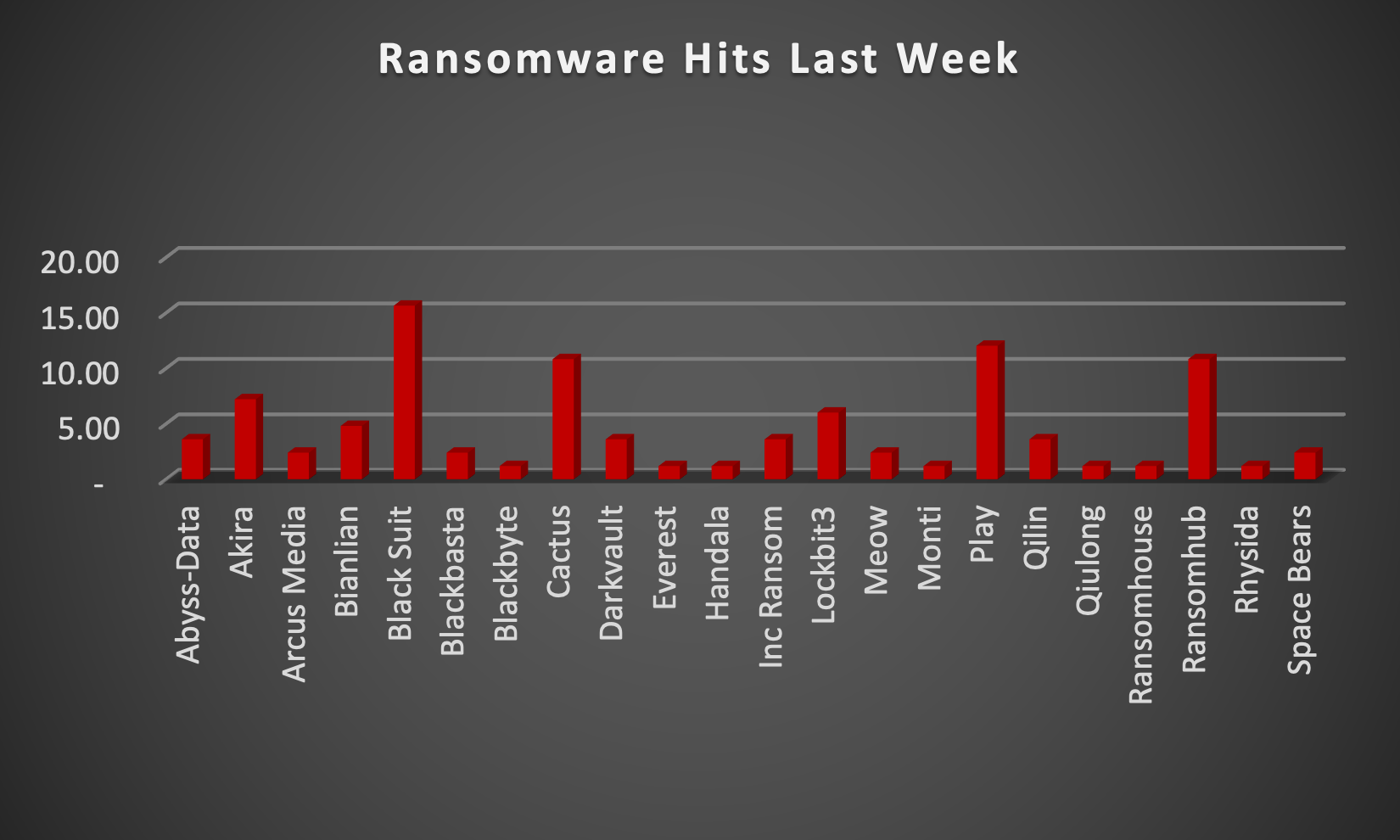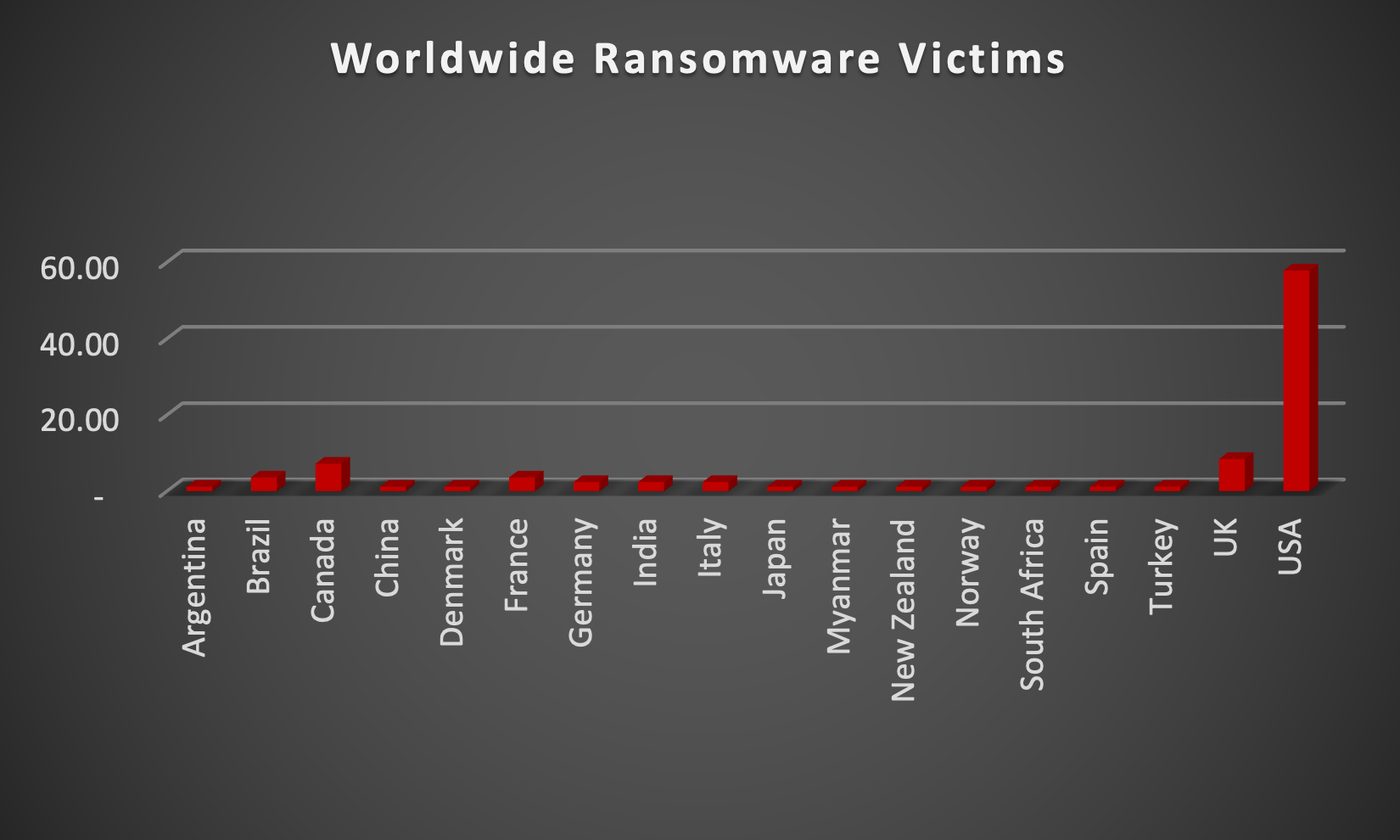
| New Threat Detection Added | 2 (Bmanager APT and Mint Stealer) |
| New Threat Protections | 321 |
Weekly Detected Threats
The following threats were added to Crystal Eye XDR this week:
Threat name: | Bmanager APT | |||||||||||||||||||||||||||
Bmanager APT, discovered in January 2024, is a modular Trojan designed to steal banking information, login credentials, and conduct phishing attacks. Targeting vulnerable websites, it injects malicious scripts to steal user data entered on those sites. This Trojan's strength lies in its modularity. Hackers can customise its functionality to bypass security measures and adapt to new situations. Boolka, the group behind Bmanager, has been active since 2022, employing opportunistic tactics to exploit website weaknesses. | ||||||||||||||||||||||||||||
Threat Protected: | 02 | |||||||||||||||||||||||||||
Rule Set Type: |
| |||||||||||||||||||||||||||
Class Type: | Trojan-activity | |||||||||||||||||||||||||||
Kill Chain: |
| |||||||||||||||||||||||||||
Threat name: | Mint Stealer | ||||||||||||||||||||||||
Mint Stealer is a malicious software program designed to steal cryptocurrency credentials from infected devices. Disguised as legitimate applications or spread through phishing campaigns, it infiltrates your system and searches for private keys, seed phrases, and login details for popular crypto wallets. Once it locates this information, Mint Stealer transmits it to the attackers, allowing them to steal your cryptocurrency holdings. This malware can also steal browser cookies and other sensitive data, increasing the potential financial loss. | |||||||||||||||||||||||||
Threat Protected: | 05 | ||||||||||||||||||||||||
Rule Set Type: |
| ||||||||||||||||||||||||
Class Type: | Trojan-activity | ||||||||||||||||||||||||
Kill Chain: |
| ||||||||||||||||||||||||
Known exploited vulnerabilities (Week 4 - June 2024)
Threat | CVSS | Description | |
CVE-2020-13965 | 6.1 (Medium) | Roundcube Webmail Cross-Site Scripting (XSS) Vulnerability | |
CVE-2022-2586 | 7.8 (High) | Linux Kernel Use-After-Free Vulnerability | |
CVE-2022-24816 | 9.8 (Critical) | GeoSolutionsGroup JAI-EXT Code Injection Vulnerability |
For more information, please visit the Red Piranha Forum:
https://forum.redpiranha.net/t/known-exploited-vulnerabilities-catalog-4th-week-of-june-2024/482
Updated Malware Signatures (Week 4 - June 2024)
Threat | Description | |
Nanocore | The Nanocore trojan, built on the .NET framework, has been the subject of multiple source code leaks, resulting in its widespread accessibility. Like other remote access trojans (RATs), Nanocore empowers malicious actors with complete system control, enabling activities such as video and audio recording, password theft, file downloads, and keystroke logging. | |
Glupteba | A malware dropper that is designed to download additional malware on an infected machine. | |
Lumma Stealer | A type of malware classified as an information stealer. Its primary purpose is to steal sensitive information from infected systems, including but not limited to credentials, financial information, browser data, and potentially other personal or confidential information. |
| Ransomware Report | |
The Red Piranha Team actively collects information on organisations globally affected by ransomware attacks from various sources, including the Dark Web. In the past week alone, our team uncovered new ransomware victims and updates on previous victims across 21 industries spanning 18 countries. This underscores the widespread and indiscriminate impact of ransomware attacks, emphasising their potential to affect organisations of varying sizes and sectors worldwide. BlackSuit ransomware group stands out as the most prolific, having updated a significant number of victims (15%) distributed across multiple countries. In comparison, Ransomhouse ransomware updated 10% of victims, in the past week. The following list provides the victim counts in percentages for these ransomware groups and a selection of others. | |
| Name of Ransomware Group | Percentage of new Victims last week |
Abyss-Data | 3.61% |
Akira | 7.23% |
Arcus Media | 2.41% |
Bianlian | 4.82% |
BlackSuit | 15.66% |
Blackbasta | 2.41% |
Blackbyte | 1.20% |
Cactus | 10.84% |
Darkvault | 3.61% |
Everest | 1.20% |
Handala | 1.20% |
Inc Ransom | 3.61% |
6.02% | |
Meow | 2.41% |
Monti | 1.20% |
12.05% | |
Qilin | 3.61% |
Qiulong | 1.20% |
Ransomhouse | 1.20% |
Ransomhub | 10.84% |
Rhysida | 1.20% |
Space Bears | 2.41% |

BlackSuit Ransomware
Emerging in early 2023, BlackSuit ransomware swiftly carved a niche in the cybercrime landscape. This ruthless malware employs a double extortion tactic, crippling victims by encrypting their data and threatening to leak it on the dark web if ransom demands aren't met. While BlackSuit's origins remain shrouded in some mystery, security researchers believe it's a rebrand of the notorious Royal ransomware operation. Royal ransomware, itself suspected to be the successor of the Conti cybercrime syndicate, had a significant presence in the cybercriminal underworld. BlackSuit's connection to these groups suggests a level of experience and expertise behind its development and deployment.
Tactics, Techniques, and Procedures (TTPs):
BlackSuit doesn't rely on a one-size-fits-all approach. It possesses a diverse arsenal of tactics, techniques, and procedures (TTPs) to target specific victims and maximise impact. Here are some key elements in its malicious toolkit:
- Phishing Attacks: Deceptive emails designed to trick users into clicking malicious links or downloading infected attachments are a common entry point. These emails may appear to be from trusted sources such as business partners, logistics companies, or even internal colleagues.
- Exploiting Unpatched Vulnerabilities: BlackSuit actively seeks out unpatched vulnerabilities in software and operating systems to gain unauthorised access to networks. This underscores the importance of keeping all software and systems updated with the latest security patches.
- Remote Desktop Protocol (RDP) Exploitation: Similar to other ransomware strains, BlackSuit can exploit weaknesses in RDP configurations to gain access to a system. RDP allows remote access to a computer, and misconfigured settings can create a vulnerability for attackers.
- Initial Access Broker (IAB) Collaboration: BlackSuit may leverage the services of Initial Access Brokers (IABs). These cybercriminals specialise in gaining initial access to victim networks, which BlackSuit can then exploit to deploy its ransomware.
- Living-off-the-Land Techniques: Like many malware strains, BlackSuit can utilise legitimate system administration tools for malicious purposes. This makes detection more challenging as these tools may appear as normal system activity.
Read all about Living-off-the-land attacks and defending against APTs. - Data Exfiltration: Before encryption, BlackSuit often exfiltrates sensitive data like financial records, personal information, and intellectual property. This stolen data serves as additional leverage in extortion attempts, putting pressure on victims to pay the ransom.
- Strong Encryption: The malware utilises robust encryption algorithms to render files inaccessible. Decrypting them without the attacker's key is extremely difficult, if not impossible. This effectively cripples a victim's operations until a decision is made.
A Global Reach with Focused Targets
BlackSuit ransomware demonstrates a mix of global reach and targeted attacks. Here are some examples of its operations:
- Healthcare and Education Sectors: Hospitals, universities, and other educational institutions have been frequent targets due to the potentially sensitive data they hold and the disruption a ransomware attack can cause.
- Critical Infrastructure Concerns: There have been concerns about BlackSuit targeting critical infrastructure sectors like power grids and transportation systems. A successful attack on such infrastructure could have devastating consequences.
- Supply Chain Attacks: BlackSuit's potential use of IABs raises concerns about large-scale supply chain attacks where a single compromised vendor can provide access to a wider network of victims.
Leak Site: BlackSuit ransomware maintains a leak site on the dark web where they threaten to publish stolen data if the ransom is not paid.
Ransom Note: One of the BlackSuit ransom notes is given below:
The emergence of BlackSuit ransomware underscores the constantly evolving cybercrime landscape. Its rebranding strategy, focus on exploiting vulnerabilities, and ruthless double extortion tactics highlight the need for organisations to prioritise robust cybersecurity measures. Here are some crucial steps organisations can take to mitigate the risk of BlackSuit ransomware and similar threats:
- Regular Backups: Maintain secure, offline backups of critical data to facilitate recovery in case of a ransomware attack.
- Patch Management: Implement a rigorous patch management system to ensure all software and operating systems are updated with the latest security patches.
- Multi-Factor Authentication (MFA): Enable MFA for all user accounts wherever possible. MFA adds an extra layer of security by requiring a second verification factor beyond just a username and password.
- Security Awareness Training: Educate employees on identifying phishing attempts and other social engineering tactics used by attackers. Regular training can significantly reduce the risk of human error leading to breaches.
- Endpoint Security Solutions: Deploy endpoint security solutions that can detect and prevent malware infections at the device level. These solutions can act as a first line of defence against such attacks.
Kill Chain:
Tactic | Technique ID | Technique Name |
Initial Access | T1566 T1190 | Phishing Exploit Public-Facing Application |
Execution | T1059 T1053 | Command and Scripting Interpreter Scheduled Task/Job |
Persistence | T1136 | Boot or Logon Initialisation Scripts |
Privilege Escalation | T1068 T1548 | Exploitation of Vulnerabilities Abuse Elevation Control Mechanism |
Defence Evasion | T1562 T1027 T1070 | Impair Defences Obfuscated Files or Information Indicator Removal |
Credential Access | T1555 T1003 | Credentials from Password Stores OS Credential Dumping |
Discovery | T1049 T1083 | System Network Connections Discovery File and Directory Discovery |
Lateral Movement | T1072 T1570 | Software Deployment Tools Lateral Tool Transfer |
Collection | T1119 | Automated Collection |
Exfiltration | T1567 | Exfiltration Over Web Service |
Command-and-Control | T1219 T1090 | Remote Access Software Proxy |
Impact | T1486 T1485 T1490 | Data Encrypted for Impact Data Destruction Inhibit System Recovery |
Indicators of Compromise (IOCs)
Indicators | Indicator Type | Description |
hxxp://weg7sdx54bevnvulapqu6bpzwztryeflq3s23tegbmnhkbpqz637f2yd.onion | URLs (Onion) | Leak Site |
2902e12f00a185471b619233ee8631f3 4f813698141cb7144786cdc6f629a92b 748de52961d2f182d47e88d736f6c835 9656cd12e3a85b869ad90a0528ca026e 748de52961d2f182d47e88d736f6c835 9656cd12e3a85b869ad90a0528ca026e 90ae0c693f6ffd6dc5bb2d5a5ef078629c3d77f874b2d2ebd9e109d8ca049f2c 1c849adcccad4643303297fb66bfe81c5536be39a87601d67664af1d14e02b9e 6ac8e7384767d1cb6792e62e09efc31a07398ca2043652ab11c090e6a585b310 4d7f6c6a051ecb1f8410243cd6941b339570165ebcfd3cc7db48d2a924874e99 b57e5f0c857e807a03770feb4d3aa254d2c4c8c8d9e08687796be30e2093286c | Hash | Malicious File |
| |||||||||||||||||||||||||||||||||||||||||

Upon further investigation, it has been identified that ransomware has left its mark on 18 different industries worldwide. Notably, Manufacturing bore the brunt of the attacks in the past week, accounting for 16% of victims. There are a few key reasons why the manufacturing sector is a prime target for ransomware groups:
- High Disruption Potential: Manufacturing relies heavily on interconnected systems and just-in-time production. A ransomware attack can grind operations to a halt, causing significant financial losses due to production delays and lost revenue. This pressure to get back online quickly can make manufacturers more willing to pay the ransom.
- Vulnerable Legacy Systems: Many manufacturers use legacy control systems (OT) that haven't been updated for security. These older systems often lack robust security features, making them easier targets for attackers to exploit.
- Limited Cybersecurity Investment: Traditionally, cybersecurity might not have been a top priority for some manufacturers compared to production efficiency. This lack of investment in security awareness training and robust security protocols leaves them exposed.
- Valuable Data: Manufacturing facilities often hold valuable intellectual property (IP) and trade secrets. Ransomware groups may not only disrupt operations but also threaten to leak this sensitive data if the ransom isn't paid.
- Success Breeds Success: The high payout potential from past attacks on manufacturers incentivises ransomware groups to continue targeting them.
The table below delineates the most recent ransomware victims, organised by industry, shedding light on the sectors grappling with the significant impact of these cyber threats.
Name of the affected Industry | Victims Count (%) |
Agriculture | 1.20% |
Business Services | 9.64% |
Cities, Town & Municipalities | 1.20% |
Construction | 9.64% |
Consumer Services | 2.41% |
Education | 2.41% |
Energy, Utilities & Waste Treatment | 2.41% |
Finance | 4.82% |
Government | 1.20% |
Healthcare | 4.82% |
Hospitality | 2.41% |
Insurance | 2.41% |
IT | 6.02% |
Legal Services | 6.02% |
Manufacturing | 15.66% |
Media & Internet | 3.61% |
Organisations | 6.02% |
Real Estate | 2.41% |
Retail | 9.64% |
Telecom | 1.20% |
Transport | 4.82% |

